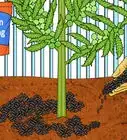This article was co-authored by Ben Barkan. Ben Barkan is a Garden and Landscape Designer and the Owner and Founder of HomeHarvest LLC, an edible landscapes and construction business based in Boston, Massachusetts. Ben has over 12 years of experience working with organic gardening and specializes in designing and building beautiful landscapes with custom construction and creative plant integration. He is a Certified Permaculture Designer, is licensed Construction Supervisor in Massachusetts, and is a Licensed Home Improvement Contractor. He holds an associates degree in Sustainable Agriculture from the University of Massachusetts Amherst.
wikiHow marks an article as reader-approved once it receives enough positive feedback. In this case, 100% of readers who voted found the article helpful, earning it our reader-approved status.
This article has been viewed 311,086 times.
Nitrogen is an essential component of plant growth and plays a vital role in the development of healthy foliage. While you can find a chemical fertilizer that contains high nitrogen levels, those interested in an organic approach can also make nitrogen fertilizer by understanding which natural products have high levels of usable nitrogen and can be mixed in or applied to the soil.
Steps
-
1Use compost. Compost is nothing more than decomposed organic matter. The average compost pile contains a plethora of beneficial nutrients, including potassium, phosphorus, and nitrogen. Regarding nitrogen, the bacteria in compost break matter down into ammonium, which is then naturally converted by other bacteria into nitrates that plants can absorb through their roots. Compost high in nitrogen materials, including moist greens, fruits, and vegetables, tends to provide the highest content of nitrogen to the soil bed it is applied to.[1]
-
2Add in some composted coffee grounds. Coffee grounds can be mixed directly into the soil or added to a pre-established compost pile. The grounds contain about two percent nitrogen by volume, which is considered fairly high as far as nitrogen-containing materials are concerned. Additionally, while some worry about the acidic properties of coffee, it is the coffee beans rather than the grounds that contain high levels of acid. Coffee grounds that remain after brewing are usually between a pH of 6.5 and 6.8, which is near neutral.[2]
- You can add coffee grounds directly to the soil by mixing damp grounds into the soil or by spreading the grounds over the surface of the soil and covering them with organic mulch.
Advertisement -
3Try composted manure. Sheep, beef cattle, and swine manure contain the largest concentrations of nitrogen, with poultry and dairy cattle manure following closely behind. Horse manure also contains some nitrogen, but the concentration is significantly less than it is in other forms of manure. Composted manure, or manure that has had the chance to decompose, is better to use because bacteria has already begun to break down the nitrogen into a form that plants can absorb.[3]
- Note that there are downsides to using animal manure. Manure tends to increase the salt content of soil, and using manure may lead to an increased yield of weeds.
-
4Mix in a good dose of blood meal for a quick-release fertilizer. Blood meal is an organic product made from dried blood, and it contains 13 percent total nitrogen. This is a notably high percentage for fertilizer components. You can use blood meal as a nitrogen fertilizer by sprinkling it over the top surface of the soil and pouring water over it to help the soil soak it in, or you could mix the blood meal directly with water and apply it as a liquid fertilizer.[4]
- Blood meal is an especially good source of nitrogen for heavy feeders, like lettuce and corn, because of how fast-acting it is.
- Blood meal can also be used as a component in compost or as an accelerant for other organic materials, since it promotes the decomposition process.
-
5Apply cotton seed meal cautiously. This fertilizer component is made of ground seeds from the cotton plant. Some consider it to be the second best natural source of nitrogen, following blood meal. Unlike blood meal, however, cotton seed meal breaks down slowly, distributing nitrogen to plants over an extended length of time.[5]
- The major disadvantage of cotton seed meal is that it has a negative impact on soil pH. It greatly acidifies soil, so if you plan to make an organic fertilizer out of cotton seed meal, you should also carefully monitor the pH of your soil.
-
6Use crab meal, feather meal, or leather meal for slow-release fertilizers. These products are made from ground crab, feathers, and cowhide leather, respectively, and each contains a decent amount of nitrogen. These components all break down at a slow pace, however, and will not provide adequate amounts of usable nitrates to plants in need of a quick dose. These components are good to use in fertilizer mixes and composts, though, since they can maintain a steady content of nitrogen throughout the growing season.[6]
-
7Try biosolids and wood. Treated biosolids and wood materials Sawdust, wood chips, and sewage sludge (which are pre-treated before using as fertilizer) all contain nitrogen and can all be used in nitrogen fertilizers, just make sure that the biosolid you will be using are treated and monitored properly, if not,the associated risks of such products may not be worth the potential benefit. Moreover, because these materials all decompose slowly and contribute small amounts of nitrogen, they are not even the most beneficial nitrogen components available.While they might not be the best choice for nitrogen fertilizers, biosolid fertilizers add much needed nutrients. Wood chips also add anchorage for the plants.[7]
-
8Plant nitrogen-fixing cover crops. Certain plants, like legumes and clover, store nitrogen in nodules at their roots. These nodules release nitrogen into the soil gradually while the plant lives, and when the plant dies, the remaining nitrogen enhances the overall quality of the soil.[8]
- Just toss some legumes on the soil. Mung beans are suggested since they don't grow too big but they grow fast.
- To replenish Nitrogen on the soil. Try fallowing. When resting your plot on the 7th year, sow some mung beans. Don't harvest the mung beans, instead, let the seeds fall into the ground for more nitrogen-fixers. Do this, especially if you will be planting heavy feeders like corn on the next growing year.
Community Q&A
-
QuestionWhat is bone meal?
 Community AnswerBone meal is a product often used in pet food and organic fertilizers. It has the texture of sand. It is made by crushing, cooking and pressing animals bones, and then separating the hard material (meal) from the liquid material (oil, or tallow, as it is commonly known).
Community AnswerBone meal is a product often used in pet food and organic fertilizers. It has the texture of sand. It is made by crushing, cooking and pressing animals bones, and then separating the hard material (meal) from the liquid material (oil, or tallow, as it is commonly known). -
QuestionI've heard of a fertilizer of cottonseed meal and coffee grounds in a ratio of 3 parts to 1, but I am not sure which is the larger part of the blend. Does anyone know?
 Community AnswerCottonseed is the 3.
Community AnswerCottonseed is the 3. -
QuestionWhat should I put on my hydrangeas to make them blue?
 Dean LeasonCommunity AnswerTo encourage blue hydrangea flowers, grow the plant in soil that has a pH of 5.2-5.5. Applying an acidic organic mulch, such as pine needles or bark, can help.
Dean LeasonCommunity AnswerTo encourage blue hydrangea flowers, grow the plant in soil that has a pH of 5.2-5.5. Applying an acidic organic mulch, such as pine needles or bark, can help.
Warnings
- Be careful about how much nitrogen you apply to your soil. Nitrogen breaks down into nitrates and ammonium, and both products are not retained well from season to season. As such, any nitrogen that a plant does not use will mostly get leeched out of the soil and into waterways, reducing the water's quality.⧼thumbs_response⧽
Things You’ll Need
- Compost
- Coffee grounds
- Manure
- Blood meal
- Cotton seed meal
- Crab meal
- Feather meal
- Leather meal
- Wood mulches
- Biosolids
References
- ↑ https://extension2.missouri.edu/g6956
- ↑ http://www.sciencedaily.com/releases/2008/07/080707171641.htm
- ↑ https://extension2.missouri.edu/g6956
- ↑ http://www.extremelygreen.com/fertilizerguide.cfm
- ↑ https://www.epicgardening.com/cottonseed-meal/
- ↑ http://northcoastgardening.com/2014/10/single-ingredient-fertilizers/
- ↑ https://extension2.missouri.edu/g6956
- ↑ https://www.farmprogress.com/cover-crops/nitrogen-cycling-and-cover-crops

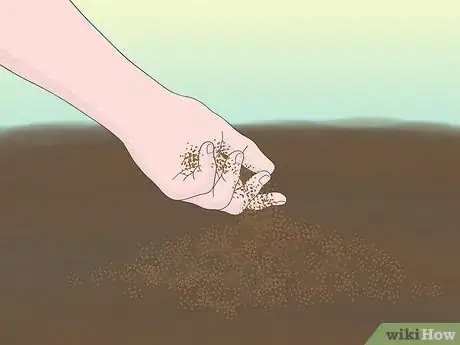

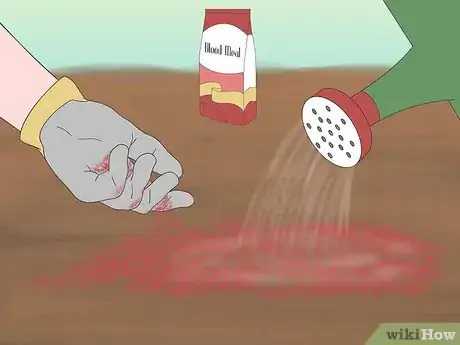
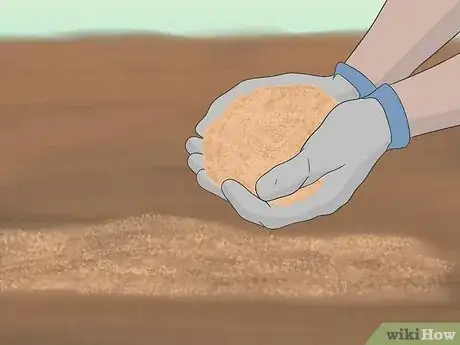
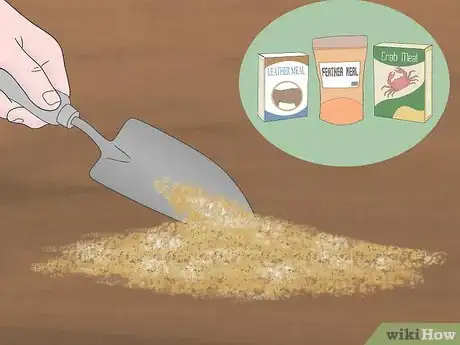
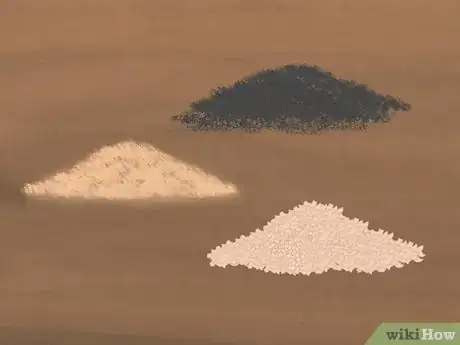

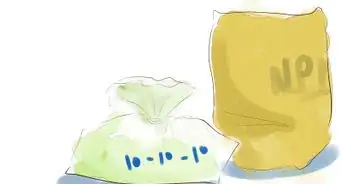
-Step-10-Version-3.webp)

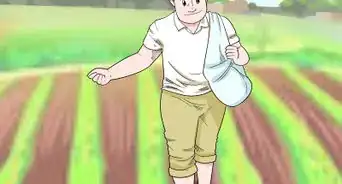


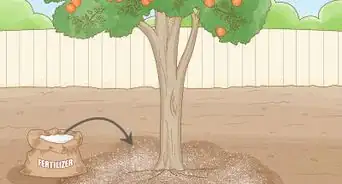

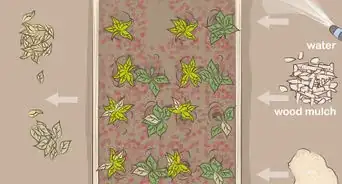
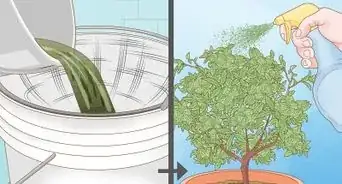

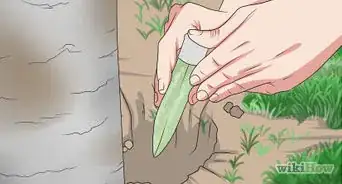











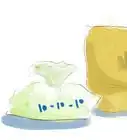
-Step-10-Version-3.webp)
